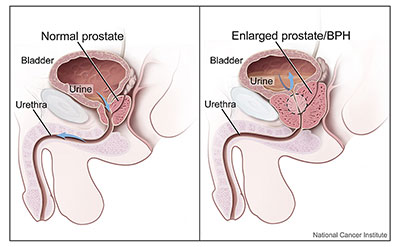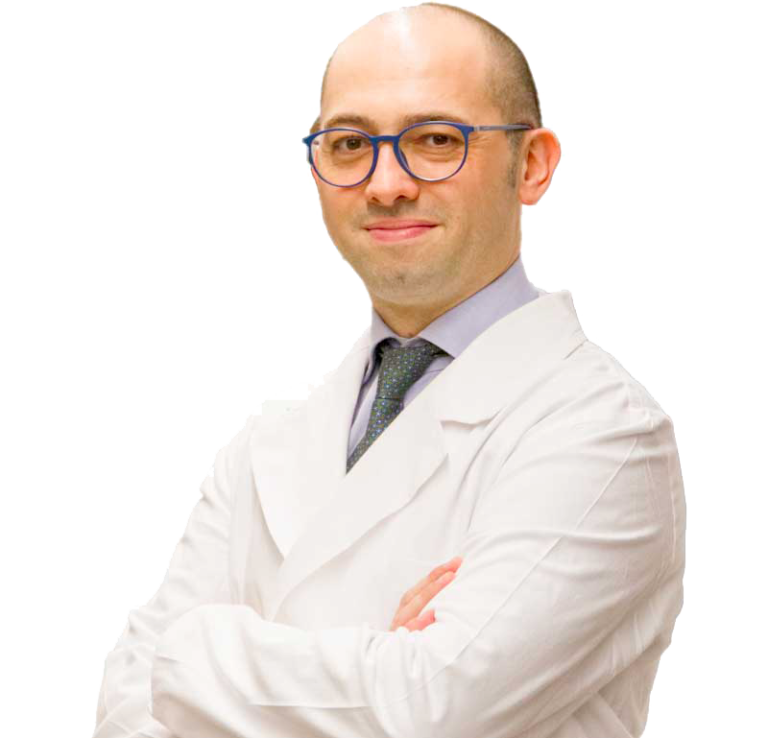Prostate Symptom
What is the Prostate?
The prostate is part of the male reproductive system, is located below the bladder and in front of the rectum and goes all around a tube called urethra which carries urine from the bladder out through the penis. Main function of the prostate is to make fluid for semen. During ejaculation spermatozoa and sperm fluid made in the testicles moves through vas deferens to the urethra; at the same time, fluid from the prostate and the seminal vesicles also moves into the urethra so, the ejaculated fluid is a mixture which goes through the urethra and out the penis.
Los Síntomas del Tramo Urinario Inferior (STUI) se pueden dividir en: almacenamiento, vaciado y posterior a la micción. Están fuertemente asociados con el envejecimiento y la mayoría de los hombres de edad avanzada refiere por lo menos un STUI.
Lower Urinary Tract Symptoms (LUTS) can be divided into storage, voiding and post-micturition. They are strongly associated with ageing and most elderly men report having at least one LUTS. They progress dynamically: for some individuals LUTS persist and progress over long time periods, and for others they remit. They have traditionally been related to bladder outlet obstruction, which is often caused by benign prostatic enlargement/hypertrophy (BPE/BPH). Bladder dysfunction may also cause LUTS (detrusor overactivity, detrusor underactivity, and other structural or functional abnormalities of the urinary tract). In addition, many non-urological conditions (neurological or other) also contribute to LUTS, especially nocturia.

Benign prostatic hyperplasia (BPH) is a condition characterized by an enlarged prostate. The prostate goes through two main growth periods as a man ages: the first occurs in puberty and prostate doubles in size; the second begins around age 25-30 and continues during most of a man’s life.
As the prostate enlarges, it can then squeeze down on urethra and bladder may lose progressively the ability to empty completely, leaving some urine in the bladder. The narrowing of the urethra and urinary retention, which is the inability to empty the bladder completely, causes many of the problems associated with benign prostatic hyperplasia. BPH it’s not related to cancer, doesn’t cause cancer and is common in aging men. About 50% of all men between 50 and 60 years old have BPH while up to 90% of men over age 80 have BPH.
When prostate is enlarged, it can irritate the bladder (which is a “special” muscle). A common symptom of BPH is the need to urinate often, especially at night. Other symptoms include:
- feeling that the bladder is full, even right after voiding.
- feeling that urinating “can’t wait”;
- weak urine flow;
- dribbling of urine;
- the need to stop and start urinating several times;
- trouble starting to urinate;
- the need to push or strain to urinate;
- the impossibility to void (that’s an emergency!).
In most men, BPH gets worse with age. It can lead to bladder damage, infection, stone formation and functional disorders and can even cause kidney damage. In the majority of conditions, BPH should be treated.
Causes
The cause of benign prostatic hyperplasia is not clear. Some Authors believe factors related to aging and the testicles may cause benign prostatic hyperplasia.
With age, the total amount of active testosterone circulating (a male hormone) in blood decreases, which leaves a higher proportion of estrogen (a female hormone). Scientific studies have suggested that benign prostatic hyperplasia may occur because the higher proportion of estrogen within the prostate increases the activity of substances that promote prostate cell growth. Another theory focuses on dihydrotestosterone (DHT), a male hormone that plays a role in prostate development and growth. Some studies have indicated that even with a drop in blood testosterone levels, older men continue to produce and accumulate high levels of DHT in the prostate. This accumulation of DHT may encourage prostate cells to continue to grow.
Prostatic disease can be treated without the patient’s age represents a limiting factor.
Dr. Marco Cosentino
Andrological and Urological Treatments
I operate for years as specialized urologist and andrologist. Experience, research and international studies. I have done allows me to treat many problems, dysfunctions or diseases and urological andrology nature. Working with the aim of making each patient regain my intimate and satisfactory sex life.



